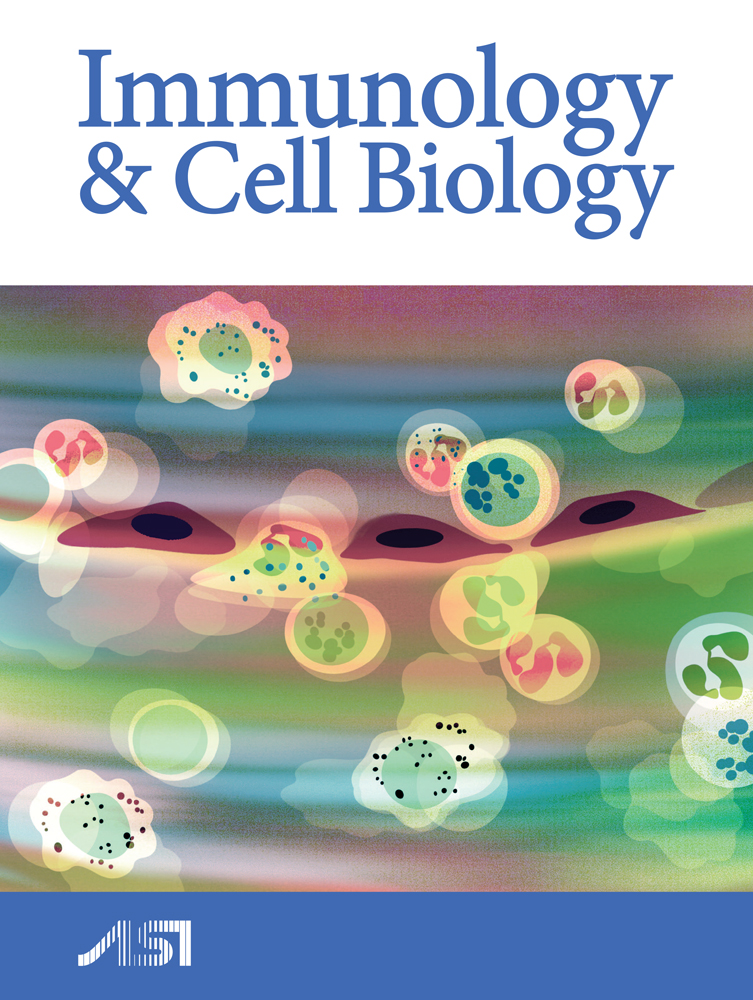Landmark
The enunciation and impact of Macfarlane Burnet's clonal selection theory of acquired immunity
Gordon Ada,
Corresponding Author
Gordon Ada
Professor G Ada, Division of Immunology and Genetics, John Curtin School of Medical Research, The Australian National University, Canberra, Australian Capital Territory 0200, Australia. E-mail: [email protected]Search for more papers by this authorGordon Ada,
Corresponding Author
Gordon Ada
Professor G Ada, Division of Immunology and Genetics, John Curtin School of Medical Research, The Australian National University, Canberra, Australian Capital Territory 0200, Australia. E-mail: [email protected]Search for more papers by this authorNo abstract is available for this article.
References
- 1Burnet FM, Freeman M, Jackson AV, Lush D. The Production of Antibodies: A Review and Theoretical Discussion. (Monograph of the Walter and Eliza Hall Institute of Research in Pathology and Medicine. No I) Macmillan:Melbourne, Australia, 1941.
- 2Burnet FM, Fenner F. The Production of Antibodies, 2nd edn. (Monograph of the Walter and Eliza Hall Institute of Research in Pathology and Medicine, No. 2). Macmillan:Melbourne, Australia, 1949.
- 3Billingham RE, Brent L, Medawar PB. Actively acquired tolerance of foreign cells. Nature 1953; 172: 603–606.
- 4Ehrlich P. The Croonian lecture; on immunity. Proc Royal Soc Lond (Biology) 1900; 66: 424.
- 5Landsteiner K. Die Spezifizitat Der Serologischen Reaktionen. Springer-Verlag:Berlin, 1933.
- 6Pauling L. A theory of the structure and process of formation of antibodies. J Am Chem Soc 1940; 62: 2643–2657.
- 7Nossal GJV, Ada GL, Austin CM. Antigens in immunity. IX. The antigen content of single antibody-forming cells. J Exp Med 1965; 121: 945–954.
- 8McDevitt HO, Askonas BA, Humphrey JH, Sela M. The localisation of antigen in relation to specific antibody-producing cells. 1. Use of a specific peptide (T,G)AL labelled with iodine 125. Immunology 1966; 11: 337–351.
- 9Jerne NK. The natural selection theory of antibody formation. Proc Natl Acad Sci USA 1955; 41: 849–857.
- 10Talmage DW. Allergy and immunology. Ann Rev Med 1957; 8: 239–256.
- 11Burnet FM. A modification of Jerne's theory of antibody production using the concept of clonal selection. Aust J Sci 1957; 20: 67–69.
- 12Burnet FM. Changing Patterns: An Atypical Autobiography. William Heinemann:Melbourne; London, 1968, pp. 1–282.
- 13Nossal GJV. Choices following antigen entry: antibody formation or immunologic tolerance. Ann Rev Immun 1995; 13: 1–28.
- 14Nossal GJV, Lederberg J. Antibody production by single cells. Nature 1958; 181: 1419–1420.
- 15Nossal GJV. PhD Thesis, University of Sydney, 1960.
- 16White RG. Antibody production by single cells. Nature 1958; 182: 1383–1384.
- 17Attardi G, Cohn M, Horibata K, Lennox ES. On the analysis of antibody synthesis at the cellular level. Bacteriol Rev 1958; 23: 213–223.
10.1128/MMBR.23.4.213-223.1959 Google Scholar
- 18Nossal GJV, Makela O. Kinetic studies on the incidence of cells appearing to form two antibodies. J Immunol 1962; 88: 604–612.
- 19Makela O. The specificities of antibodies produced by single cells. Cold Spring Harb Symp Quant Biol 1967; 9: 423–430.
10.1101/SQB.1967.032.01.054 Google Scholar
- 20Green I, Vassalli P, Nussenzweig V, Benacerraf B. Specificity of the antibodies produced by single cells following immunisation with antigens bearing two types of antigen determinants. J Exp Med 1967; 125: 511–526.
- 21Burnet FM. The Clonal Selection Theory of Acquired Immunity. Cambridge University Press:London, 1959.
- 22Burnet FM. The impact of ideas on Immunology. Cold Spring Harb Symp Quant Biol 1967; 9: 1–9.
10.1101/SQB.1967.032.01.005 Google Scholar
- 23Jerne NK. Summary: Waiting for the End. Cold Spring Harb Symp Quant Biol 1967; 9: 591–603.
10.1101/SQB.1967.032.01.072 Google Scholar
- 24Raff MC, Feldmann M, de Petris S. Monospecificity of bone marrow-derived lymphocytes. J Exp Med 1973; 126: 443–454.
- 25Kohler G, Milstein C. Derivation of specific antibody-producing tissue culture and tumour lines by cell fusion. Eur J Immunol 1976; 6: 511–519.





